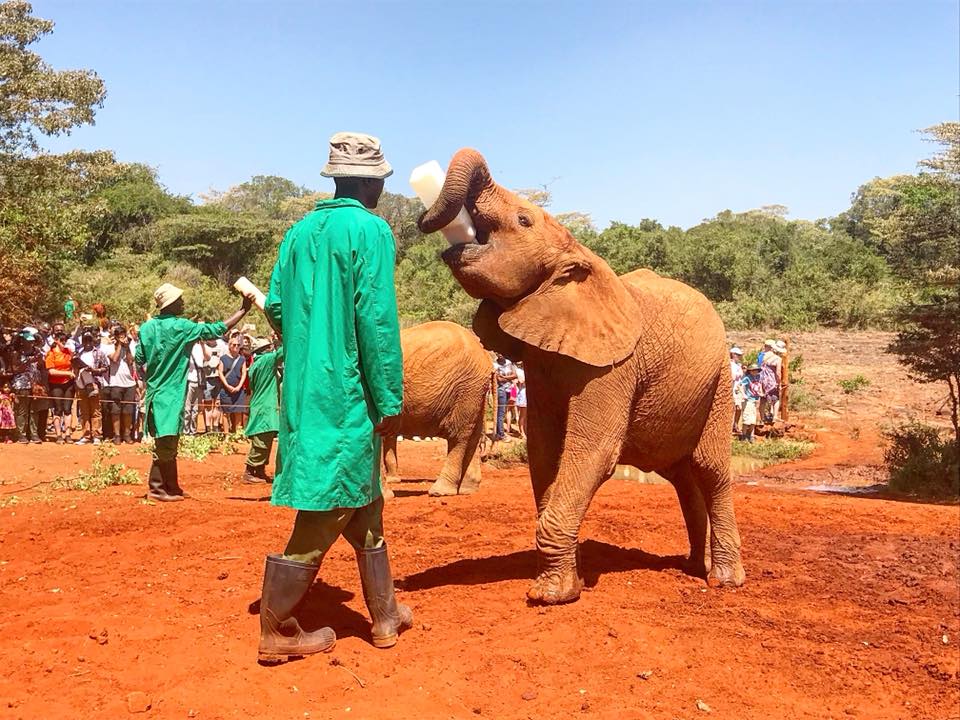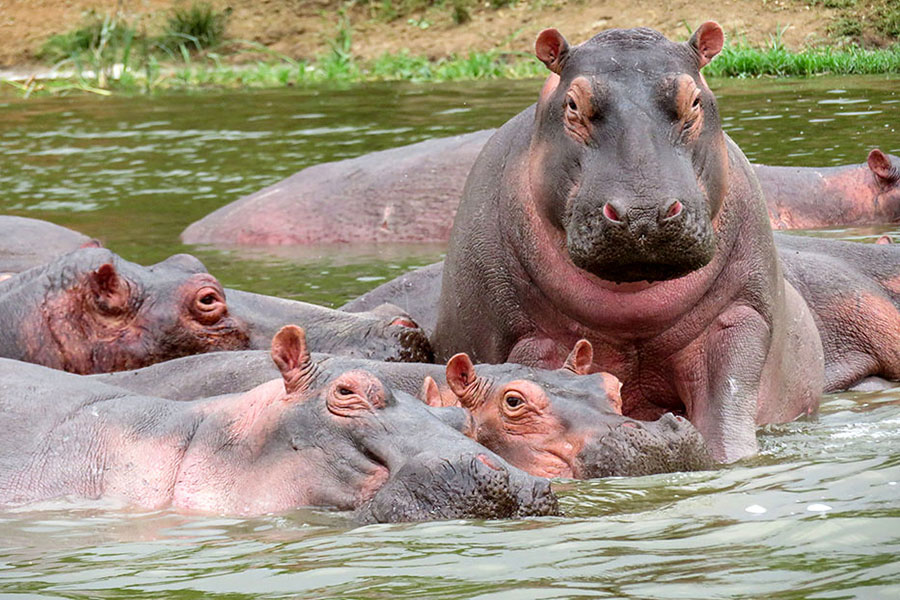Welcome to Nairobi National Park Safari!
Just a short drive from Nairobi’s bustling central business district lies the breathtaking Nairobi National Park. Here, wide open grass plains form a stunning backdrop against the city skyscrapers, while scattered acacia bushes create the perfect habitat for an array of wildlife.
Immerse yourself in the wonders of nature as you encounter the majestic black rhino, lions, leopards, cheetahs, hyenas, buffaloes, giraffes, and a diverse array of birdlife, with over 400 species recorded in this pristine environment.
ATTRACTIONS IN NAIROBI NATIONAL PARK
Here are some of the attractions you can enjoy in Nairobi National Park:

Wildlife Viewing
Nairobi National Park is home to a variety of wildlife species, including lions, leopards, buffaloes, giraffes, zebras, rhinos, cheetahs, hippos, crocodiles, and numerous bird species. Visitors can embark on game drives through the park to observe these animals in their natural habitat.

Ivory Burning Site Monument
Located within Nairobi National Park is the Ivory Burning Site Monument, commemorating the historic event in 1989 when Kenya's then-President Daniel Arap Moi set fire to a massive stockpile of ivory tusks, sending a powerful message against elephant poaching and the illegal ivory trade.

David Sheldrick Wildlife Trust
Adjacent to Nairobi National Park is the David Sheldrick Wildlife Trust, a renowned elephant orphanage and rehabilitation center. Visitors can observe baby elephants being cared for and learn about the conservation efforts to protect these majestic creatures.

Nairobi Safari Walk
The Nairobi Safari Walk is an educational facility within the park that offers guided walking trails and raised wooden boardwalks for visitors to explore. It provides an opportunity to learn about Kenya's diverse ecosystems, wildlife conservation efforts, and sustainable tourism practices.

Picnic Sites and Viewpoints
Nairobi National Park features several designated picnic sites and viewpoints where visitors can relax, enjoy a meal, and take in panoramic views of the park's landscapes, including the Nairobi skyline and the scenic Athi Plains.

Hippo Pool
The park is also home to a hippo pool where visitors can observe hippos lounging in the water and basking in the sun. The pool attracts various bird species and offers a tranquil setting for wildlife viewing and photography.

Walking Trails
In addition to guided game drives, Nairobi National Park offers walking trails for visitors who prefer to explore on foot. These trails provide opportunities for birdwatching and close encounters with nature in a safe and controlled environment.

Nairobi Animal Orphanage
Nairobi Animal Orphanage is found inside Nairobi National Park which is another big attraction in the park that travelers can do and visit while in the park. The Nairobi Animal Orphanage is a treatment and rehabilitation center for wild animals like the cheetahs, lions, monkeys, and others once they are hurt say by poachers. The Nairobi Animal Orphanage is a great place to see wildlife upfront, unlike when on a game drive.
History of Nairobi National Park
Nairobi National Park is the only wildlife park in the world that is this close to a city, having been gazetted on December 16, 1946, and situated around 7 km (4.3 mi) south of Nairobi, Kenya. Over 45 square miles, or 117 km³, the park is situated between 5000 and 6000 feet (1500 and 1800 meters) above sea level. Nairobi National Park’s vegetation is of the dry transitional savanna variety, and it is divided into three sections: rolling plains and valleys, densely forested confluences of multiple rivers, and deep forests close to the city’s periphery. Muhuhu, Cape chestnut, Kenya olive, acacias, and other prickly types are the most significant trees that provide habitat for the species in the park
Nairobi National park is the major rhino sanctuary for breeding and restocking other parks, the park is a home of over 100 mammal species having four of the Big five (lion, Buffalo, leopard, rhino) other animal species include the zebra, black rhinoceroses, giraffe, various species of antelope well as numerous reptiles and among others in the park also the park has a spectacular wildebeest and zebra migration.
Nairobi National Park has over 500 recorded bird species at least 20 of which are seasonal European migrants, some of the bird species in the park includes the Secretary bird, Lesser kestrel, Martial eagle, Pallid harrier, Sooty falcon, White-bellied bustard, Grey crowned crane, Corncrake and many others.
Nairobi National Park has the Nairobi Animal Orphanage, founded in 1963 which is located inside the park which serves treatments and rehabilitation center for wild animals like the lions, cheetahs, hyenas, jackals, servals and among others also the bird species can be viewed including the parrots, guinea fowls, crowned cranes, ostriches and many others. The distance between Nairobi and Nairobi National Park is 15.6km through the A104 road which takes you about 28 minutes by the road means. Nairobi National Park is amazed with other Kenya wildlife attractions like the Ivory burning Site Monument, Walking trails at hippo pools, Nairobi Safari Walk and the Orphanage, Spacious accommodating picnic, which makes Kenya safaris and Kenya Tours to experience a number of tourists to visit Nairobi National Park due to various activities in the park. Despite its proximity to the city and its relative small size, it boasts a large and varied wildlife population, and is one of the Kenya’s most successful rhinoceros sanctuaries.






Best time to visit Nairobi National Park
The best time to visit the park is during the dry moths, from July to October, and also January and February. July has the lowest rainfall among all the months of the year. Along with July, August is the driest month in Nairobi.
Wildlife observation peaks during the Dry season (when animals frequently gather around water sources), running from June to September, though Nairobi NP welcomes visitors year-round. Spotting wildlife becomes more challenging during the long rains (March to May) and the short rains (October to November). During these periods, rainfall may impede game drives, and the grass tends to grow quite tall.
Weather and Climate of Nairobi National Park

Nairobi experiences a mild and moderate climate with relatively stable temperatures throughout the year, cooling notably during the night. The Dry season, spanning from June to October, is characterized by minimal rainfall. In contrast, the Wet season, occurring from November to May, features two distinct periods of rain. The “short rains” are most intense in November, while the “long rains” reach their peak in April. Throughout the year, Nairobi enjoys consistent temperatures and experiences distinct wet and dry seasons.
Where to Camp in Nairobi national park

For tourists seeking a camping adventure during their Kenya safari in Nairobi National Park, the park offers three public campsites equipped with amenities such as electricity, hot water showers, and communal kitchens. Additionally, tent hire services are available at the main gate for visitors without their own tents.
For those desiring a camping experience beyond setting up their own tents, Nairobi Tented Camp presents an excellent option. Situated within the park’s boundaries on the western side, Nairobi Tented Camp provides luxurious accommodations with nine permanent tents featuring en-suite bathrooms and solar lighting. The camp offers gourmet dining experiences, serving meals amidst the wilderness under the starlit sky or within the dining tent.
Dry season –June to October
It rains very little in the Dry season, although when the first rains fall is changeable. July and August are the coolest months, and temperatures increase in September through October before the rain breaks.
June, July, August & September – Lots of sunshine with very little rain. Afternoons are pleasant with temperatures around 24°C/75°F, but evenings and early mornings are cold with temperatures of around 12°C/54°F.
October – It is warming up a bit with afternoon temperatures of about 26°C/79°F. The short rains might start towards the end of the month, or it might be later in November. Temperatures drop after the rains.
Wet season –November to May
The Wet season is comprised of three distinct parts: the ‘short rains’ from November to December and the ‘long rains’ from March to May, with a dry period separating them.
November & December – ‘Short rains’: October or November sees the start of the short rains, which normally peak in November. Temperatures increase before it rains, drop immediately after, and average at 25°C/77°F in the afternoon.
January & February – The rains dry up in these months, separating the two rainy seasons. It’s the hottest time of year with average afternoon temperatures of 28°C/82°F.
March, April & May – ‘Long rains’: April is the wettest month and rain might interfere with your game drives. Road conditions deteriorate. The rain diminishes in May, but the roads may still be problematic until later that month. Afternoon temperatures are around 26°C/79°F.

